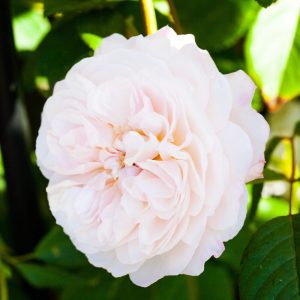Description
Imperata cylindrica ‘Red Baron’, commonly known as Japanese blood grass, is a striking ornamental grass with long, narrow leaves that are deep green at the base and transition to a bright red color at the tips, giving the plant a unique, eye-catching appearance. The grass is native to East Asia, but has been widely cultivated in gardens throughout the world for its vibrant color and unusual texture. Japanese blood grass is a popular choice for borders, rock gardens, and containers, and prefers well-drained soil and full sun to partial shade. The grass is generally low-maintenance, and is known for its drought tolerance and ability to attract wildlife such as birds and butterflies. Some popular companion plants for Japanese blood grass include other ornamental grasses such as miscanthus and pennisetum, as well as perennials such as black-eyed Susans and sedums. These plants are often used together in gardens to create dynamic displays of color and texture.
Key Facts
- Common Name(s):Cogon Grass ‘Red Baron’
- Hardiness:Fully hardy through most of the UK
- How big will I get? Imperata cylindrica ‘Red Baron’ can grow to a height of 0.5m and a spread of 0.5m.
- Did You Know That:In Japan, the plant is sometimes used as a natural dye for fabric and other materials?
Plant Calendar
A rough guide to how this plant will change through the year.
| Jan | Feb | Mar | Apr | May | June | July | Aug | Sept | Oct | Nov | Dec | |
| Flowering Time |  |
 |
||||||||||
| Foliage Colour |   |
  |
  |
  |
  |
  |
  |
  |
  |
| J | F | M | A | M | J | J | A | S | O | N | D |
 |
 |
||||||||||
  |
  |
  |
  |
  |
  |
  |
  |
  |
Care Guide

Soil Requirements
Imperata cylindrica ‘Red Baron’ is a versatile plant and can cope with wet or drier soils, but prefers there to be decent drainage. This plant can grow in soil with a wide range of pH levels, it is not picky about the pH level of the soil.

Best Position
Imperata cylindrica ‘Red Baron’ can handle either an exposed or a sheltered position and can cope with either full sun or partial shade.

Maintenance
Imperata cylindrica ‘Red Baron’ does not require any pruning, but ideally you should remove any dead or damaged foliage in late Spring, this will quickly be replaced by new growth and will keep the plant looking fresh and healthy.

Pest, Diseases and Wildlife
Imperata cylindrica ‘Red Baron’ is generally pest free, and it tends not to have problems with diseases. It is not considered to be toxic.







